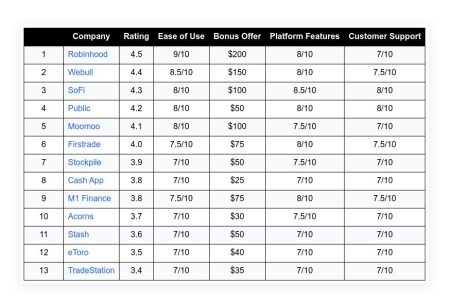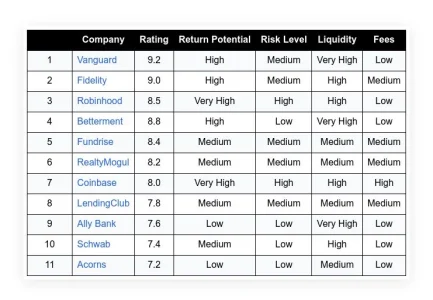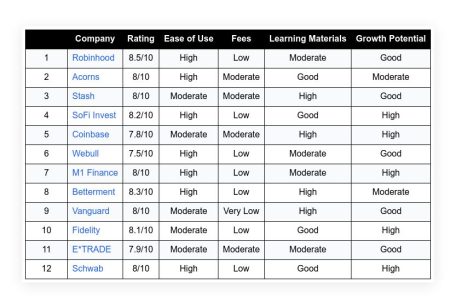Although college is a time of great change and excitement, it can also be a difficult time financially. Thanks to high tuition and hidden costs, students often live on tight budgets, and grocery shopping can be one of their biggest expenses. There are costs involved regardless of whether students consume off-campus meals, cook at home/in their dorms, or take advantage of an on-campus meal plan.
Here’s a look at what the average cost of food is for college students:
- For a college student, food costs $670 a month on average.
- On average, college students spend $410 a month eating away from campus.
- In addition to the cost of eating off-campus, cooking meals at home averages $260 a month.
- The average monthly cost of a campus meal plan is $450.
- For a college student, a vegan diet cooked exclusively at home costs $155 a month.
Suffice it to say, for college students, breakfast to dinner meals can get expensive and add up pretty quickly — regardless of whether or not they have a campus meal plan. In addition, seeing the figures up close is undoubtedly even more frightful. The good news is that you can save money on groceries without sacrificing taste or health.
Table of Contents
ToggleSample College Student Grocery List
An important part of creating a college student grocery list is organizing it. If you plan to eat the same meal daily, you could arrange your shopping list by the various aisles in the grocery store, or the day of the week.
In addition, you may want to add staple items as you run out to your list each week. Don’t forget to cross off items from your shopping list when you go shopping. It’s the worst when you realize after coming back from the store that you forgot a key ingredient.
- Staples:
- Rice
- Pasta
- Beans
- Oatmeal
- Eggs
- Bread
- Milk
- Yogurt
- Cheese
- Peanut butter
- Frozen vegetables
- Canned fruits
- Spices
- Fresh Produce:
- Bananas
- Apples
- Oranges
- Carrots
- Celery
- Onions
- Tomatoes
- Potatoes
- Meat and Protein:
- Ground chicken
- Ground turkey
- Salmon
- Tunafish
- Tofu
- Lentils
For healthy and affordable meals, this list is a good starting point. To create a variety of dishes, purchase items that can easily be repurposed. You can use store-bought rotisserie chicken for a variety of meals, for instance. You can shred it over rice or quinoa for a grain bowl, or mix it with broth to make a quick soup. It can also be used in sandwiches, wraps, and quesadillas, or on salads.
Here are some sample meal plans for college students on a budget:
Breakfast:
Despite its importance, breakfast is one of the most overlooked meals of the day. In the morning, you don’t have to spend lots of time making a good, healthy breakfast packed with protein.
You can make the following breakfasts easily:
- Oatmeal. Oatmeal is a filling and healthy way to start the day. Aside from being easy to make, it is also very affordable. Oats can be cooked by adding hot water or milk and following the directions on the package. Fresh fruit, nuts, seeds, or yogurt can be added to oatmeal to enhance the flavor and nutritional value.
- Yogurt parfait. A yogurt parfait is another delicious and healthy breakfast option. Mix yogurt, fresh fruit, and granola together in a jar or cup. In addition to nuts, seeds, and chia seeds, you can also add additional protein and fiber to your meal.
- Peanut butter and banana toast. The classic peanut butter and banana toast is both affordable and healthy. Peanut butter is spread on a slice of whole-wheat bread and bananas are sliced on top. For extra flavor, sprinkle cinnamon or honey on top.
- Hard-boiled eggs. The convenience and portability of hard-boiled eggs make them a great breakfast choice. Furthermore, they contain healthy fats and protein.
- Protein Bars. You can also opt for a low-sugar protein drink or a low-sugar breakfast on the go that contains less than 10 grams of sugar.
Lunch:
If you’re on campus attending classes, it can be difficult to prepare and eat lunch in your room. Many of these meal ideas, however, can be easily transported to class, the library, or wherever else you need them.
- Sandwich. Lunch options such as sandwiches can be healthy and affordable. You can pair whole-wheat bread with grilled chicken or turkey for a lean protein option. Adding vegetables such as lettuce, tomato, and cucumber is also an option. Or, can you ever go wrong with a classic PB&J?
- Wraps. A slight variation of a sandwich is a wrap. Try spreading hummus on a wrap, and filling the rest of it with veggies or lunch meat.
- Salad. Salads are an excellent way to eat your daily serving of fruit and vegetables. Additionally, they provide fiber and vitamins. Throw some grilled chicken, fish, or tofu, vegetables, and nuts into your favorite greens for a healthy and tasty salad.
- Soup. There is nothing better than soup for lunch. It is hearty and filling. It also provides a good source of vegetables for the day. Making your own chicken noodle soup, lentil soup, or vegetable soup at home is an option, as is purchasing canned soup when on sale.
- Leftovers. If you have leftovers from dinner, you can make a quick and easy lunch the next day. To transport them to school or work, simply pack them in a container.
Dinner:
Having to cook a meal that takes a lot of time and effort might not be something you look forward to at the end of the day. The following are a few healthy, budget-friendly meal options and shortcuts to help you avoid the drive-through.
- Pasta dishes. A healthy pasta dish can be created by choosing whole-wheat pasta, grilled chicken or fish, tofu, or beans. To add nutrients, add plenty of vegetables.
- Stir-fries. With a variety of healthy ingredients, stir-fries are a quick and easy dinner option. Using a wok or a large skillet, stir-fry your favorite vegetables and lean protein sources. For a complete meal, serve over brown rice or quinoa.
- Slow cooker meals. Cooking meals in the slow cooker saves you time in the kitchen while giving you a home-cooked meal. You can make many different kinds of slow cooker meals, such as chili, stew, or pot roast.
On a budget, there are many other ways to prepare healthy meals. But, these are just a few ideas to help you get started. The main takeaway should be that by planning and preparing well, you can save money without sacrificing quality or taste when you shop for groceries.
How to Shop for Groceries on a Budget
It is likely that your college student grocery budget isn’t particularly large. However, you can still eat healthy and buy the food you want by following these frugal tips:
- Plan your meals ahead of time. As a result, you won’t make impulse purchases at the store.
- Cook in bulk. Using this method will save you both time and money. You could, for instance, prepare a big pot of chili or soup on the weekend and eat it throughout the week for lunch and dinner. You can also freeze your leftovers for later.
- Shop at discount grocery stores. The prices at discount grocery stores, like Aldi or Woodman’s Markets, are usually lower than those at traditional grocery stores.
- Use coupons and store loyalty cards. Saving money on groceries is possible with coupons and loyalty cards.
- See if there are any exclusive discounts available. As a college student, you may be able to snag a discount from the likes of HelloFresh, Thrive Market, or Kroger.
- Take advantage of cashback apps. Apps like Ibotta offer money back on grocery shopping. Scanning your receipt will give you cash back on certain items after you make a purchase. In other words, there are apps and websites that will make you money just for shopping.
- Buy generic brands. In many cases, generic brands are just as good as name brands, but they are less expensive.
- Use beans and lentils as a source of protein. Besides being a great source of protein and fiber, beans and lentils are also very affordable.
- Use simple recipes. Many healthy and delicious recipes can also be made very easily. Find recipes that don’t require any special equipment and use only a few ingredients.
- Get creative with your leftovers. A leftover can be transformed into a new and exciting meal in many ways. You can, for instance, make salads, sandwiches, or soups with leftover chicken.
Here are some additional tips for college students on a budget:
- If you have a meal plan, make the most of it. A wide variety of affordable and healthy meal plans are available for college students.
- Take advantage of free food resources on campus. Food pantries, meal swipe programs, and community gardens are some of the resources colleges provide to support students’ basic needs. Additionally, organizations such as The Salvation Army, American Red Cross, and United Way may provide assistance to college students experiencing food insecurity.
- Cook with friends or roommates. The best thing about this is that you can save money and also have some fun with your roomies at the same time
- Grow your own food. Growing your own food can reduce your food costs and improve your health if you have the space.
- Start a community garden. It is also possible to start a community garden with other students if you do not have a lot of space for your own garden. This is a great way to meet new people and save money on groceries.
It is possible to eat healthy on a budget as a college student. Follow these tips to create a grocery list that will save you money and make your meals nutritious.
FAQs
What are some tips for creating a grocery list on a budget?
- Make a list before you go to the store. By doing this, you will avoid impulse purchases and stay focused.
- Plan your meals ahead of time. You can use this to determine which ingredients you’ll need.
- Buy generic brands instead of name brands. Name brands are usually more expensive, but generic brands are often just as good.
- Shop the sales. Every week, grocery stores have sales on various items. Don’t miss out on the sales by checking your store’s flyer or app before you shop.
- Buy in bulk. Buying in bulk on items you use frequently can save you money if you have the space.
- Use coupons and promo codes. You can save money on groceries by using coupons and promo codes at grocery stores.
How can college students save money on groceries?
- Cook at home instead of eating out. Even with dining offers, eating out frequently can be expensive. Home cooking is a great way to save money and eat healthier at the same time.
- Bring your lunch to work or school. Buying food in bulk is another great way to save money.
- Share meals with roommates or friends. As well as saving money, you’ll have fun socializing.
- Grow your own food. Saving money on groceries is possible if you have a little space to grow your own food.
What are some tips for avoiding food waste?
- Only buy what you need. Organize your meals and create a grocery list for the week before going shopping.
- Store food properly. You’ll be able to store your food for longer if you do this.
- Use up leftovers. You can repurpose leftovers into new meals or snacks.
- Freeze food that you won’t be able to eat right away. Your food will last longer if you do this.
What are some resources for college students on a budget?
- SNAP (Supplemental Nutrition Assistance Program). In order to qualify for SNAP, students must be enrolled at least half-time in a college, university, community college, or business, technical, trade, or vocational school. Factors such as income, household size, and resources determine eligibility.
- Campus Food Pantries. College food pantries come in many shapes and sizes; some provide fresh groceries to students and staff, while others offer nonperishables or frozen meals. UNC Asheville, for instance, holds weekly food distribution events on campus as part of its Food Equity Initiative.
- Off-Campus Food Pantries. There are usually food pantries outside college campuses as well. By visiting FoodPantries.org, you can find one near you. There is a search tool that allows you to find food pantries by county and state.
- Meal Swipe Donations. Because rollovers are limited, many meal plan students are left with extra meal swipes at the end of the semester or academic year. Rather than wasting meals, you can donate them. The Swipe Out Hunger program, for instance, partners with hundreds of colleges to provide unused meal plan benefits to food-insecure students.
- Cooking classes. There are many programs for adult education and community colleges that offer cooking classes. You can learn how to cook healthy, affordable meals through these classes.
Why Trust Us?
Matt Rowe is currently a college student at Brigham Young University. While he has been attending school, Matt learned how to eat healthy while in college, as well as how to budget to afford high-quality, nutritious meals while in school and on a student budget. Matt has been an avid meal-prepper for over two years and has always found ways to be more efficient with the food he purchases and makes. Matt has tried different types of healthy meals for every time of the day, and the article above is just a few highlights of the things he’s learned.















